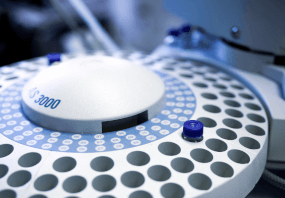Application
ANS forms an inclusion complex with cyclodextrin. Such model systems are useful to mimic biological recognition and can be studied by measuring the change in fluorescence of free-ANS to complexed-ANS. When ANS enters the hydrophobic core of cyclodestrin, it′s fluorescence increases . Utilized in the reagent phase of a sodium-selective fiber-optic sensor. The reagent phase also contains a copper(II) polyelectrolyte, which binds to ANSA in the absence of sodium and quenches the fluorescence. In the presence of sodium, ANSA forms a cationic complex creating ion-pairs, causing it to fluoresce . ANS is often incorporated into di-block polymers and can be released by changes in the local environment (i.e., temperature, pH, etc.) . ANS is commonly used as a fluorescence probe to investigate molecular assemblies of surfactants and amphiphilic polymers because a blue shift of the emission maximum indicates the fluorophore is located in less polar media . Fluorescent probe for protein studies using methodologies such as steady-state and dynamic fluorescence measurements .
- UPC:
- 51191576
- Condition:
- New
- Availability:
- 3-5 Days
- Weight:
- 1.00 Ounces
- HazmatClass:
- No
- MPN:
- 10416-500G-F
- CAS:
- 28836-03-5












